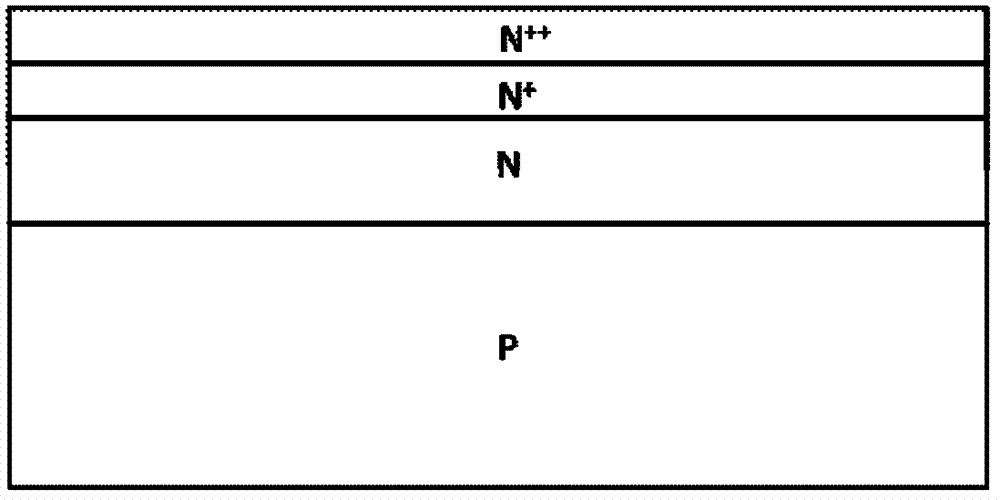Three-step variable-temperature diffusion process for silicon cell
A crystalline silicon battery and process technology, applied in the direction of circuits, electrical components, sustainable manufacturing/processing, etc., can solve problems affecting battery efficiency, battery open circuit voltage and short circuit current, poor ohmic contact, etc., to achieve enhanced blue light response, The effect of increasing knot depth
- Summary
- Abstract
- Description
- Claims
- Application Information
AI Technical Summary
Problems solved by technology
Method used
Image
Examples
Embodiment 1
[0023] Insert the textured polysilicon wafer into the quartz boat and put it on the boat. After entering the boat, raise the furnace temperature to 800°C. After the temperature stabilizes, 5 slm of large nitrogen, 0.8 slm of small nitrogen, and 0.3 slm of oxygen are introduced for low-temperature pre-deposition. The deposition time is 20 minutes. Then the temperature of the furnace was raised to 830°C, and 6slm of large nitrogen was introduced to carry out high-temperature push-in junction, and the push-in time was 10 minutes. Then the temperature of the furnace was raised to 850° C., and 5.5 slm of large nitrogen, 1.0 slm of small nitrogen, and 0.3 slm of oxygen were introduced for redeposition and diffusion. Finally, the temperature was lowered to 830°C, and 6 slm of large nitrogen was introduced to purge, and the boat was unloaded.
Embodiment 2
[0025] Insert the textured monocrystalline silicon wafer into the quartz boat and put it on the boat. After entering the boat, raise the furnace temperature to 780°C. After the temperature stabilizes, 5 slm of large nitrogen, 1.0 slm of small nitrogen, and 0.3 slm of oxygen are introduced for low-temperature pre-deposition. The deposition time is 15 minutes. Then the temperature of the furnace was raised to 820°C, and 6slm of large nitrogen was introduced to carry out high-temperature push-in junction, and the push-in time was 15 minutes. Then the furnace temperature was raised to 860°C, and 5.5 slm of large nitrogen, 0.5 slm of small nitrogen, and 0.2 slm of oxygen were introduced for redeposition and diffusion. Finally, the temperature was lowered to 830°C, and 6 slm of large nitrogen was introduced to purge, and the boat was unloaded.
PUM
 Login to View More
Login to View More Abstract
Description
Claims
Application Information
 Login to View More
Login to View More - R&D
- Intellectual Property
- Life Sciences
- Materials
- Tech Scout
- Unparalleled Data Quality
- Higher Quality Content
- 60% Fewer Hallucinations
Browse by: Latest US Patents, China's latest patents, Technical Efficacy Thesaurus, Application Domain, Technology Topic, Popular Technical Reports.
© 2025 PatSnap. All rights reserved.Legal|Privacy policy|Modern Slavery Act Transparency Statement|Sitemap|About US| Contact US: help@patsnap.com



